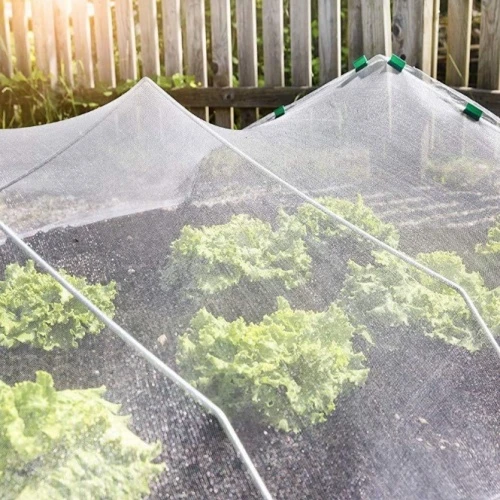-
 Afrikaans
Afrikaans -
 Albanian
Albanian -
 Amharic
Amharic -
 Arabic
Arabic -
 Armenian
Armenian -
 Azerbaijani
Azerbaijani -
 Basque
Basque -
 Belarusian
Belarusian -
 Bengali
Bengali -
 Bosnian
Bosnian -
 Bulgarian
Bulgarian -
 Catalan
Catalan -
 Cebuano
Cebuano -
 China
China -
 Corsican
Corsican -
 Croatian
Croatian -
 Czech
Czech -
 Danish
Danish -
 Dutch
Dutch -
 English
English -
 Esperanto
Esperanto -
 Estonian
Estonian -
 Finnish
Finnish -
 French
French -
 Frisian
Frisian -
 Galician
Galician -
 Georgian
Georgian -
 German
German -
 Greek
Greek -
 Gujarati
Gujarati -
 Haitian Creole
Haitian Creole -
 hausa
hausa -
 hawaiian
hawaiian -
 Hebrew
Hebrew -
 Hindi
Hindi -
 Miao
Miao -
 Hungarian
Hungarian -
 Icelandic
Icelandic -
 igbo
igbo -
 Indonesian
Indonesian -
 irish
irish -
 Italian
Italian -
 Japanese
Japanese -
 Javanese
Javanese -
 Kannada
Kannada -
 kazakh
kazakh -
 Khmer
Khmer -
 Rwandese
Rwandese -
 Korean
Korean -
 Kurdish
Kurdish -
 Kyrgyz
Kyrgyz -
 Lao
Lao -
 Latin
Latin -
 Latvian
Latvian -
 Lithuanian
Lithuanian -
 Luxembourgish
Luxembourgish -
 Macedonian
Macedonian -
 Malgashi
Malgashi -
 Malay
Malay -
 Malayalam
Malayalam -
 Maltese
Maltese -
 Maori
Maori -
 Marathi
Marathi -
 Mongolian
Mongolian -
 Myanmar
Myanmar -
 Nepali
Nepali -
 Norwegian
Norwegian -
 Norwegian
Norwegian -
 Occitan
Occitan -
 Pashto
Pashto -
 Persian
Persian -
 Polish
Polish -
 Portuguese
Portuguese -
 Punjabi
Punjabi -
 Romanian
Romanian -
 Russian
Russian -
 Samoan
Samoan -
 Scottish Gaelic
Scottish Gaelic -
 Serbian
Serbian -
 Sesotho
Sesotho -
 Shona
Shona -
 Sindhi
Sindhi -
 Sinhala
Sinhala -
 Slovak
Slovak -
 Slovenian
Slovenian -
 Somali
Somali -
 Spanish
Spanish -
 Sundanese
Sundanese -
 Swahili
Swahili -
 Swedish
Swedish -
 Tagalog
Tagalog -
 Tajik
Tajik -
 Tamil
Tamil -
 Tatar
Tatar -
 Telugu
Telugu -
 Thai
Thai -
 Turkish
Turkish -
 Turkmen
Turkmen -
 Ukrainian
Ukrainian -
 Urdu
Urdu -
 Uighur
Uighur -
 Uzbek
Uzbek -
 Vietnamese
Vietnamese -
 Welsh
Welsh -
 Bantu
Bantu -
 Yiddish
Yiddish -
 Yoruba
Yoruba -
 Zulu
Zulu
butterfly proof garden netting
The Essential Role of Butterfly Proof Garden Netting in Modern Horticulture
Gardeners and horticulturists alike face a myriad of challenges when it comes to maintaining healthy and thriving gardens. Among these, pest control stands out as a perennial concern. While many consider chemical pesticides, an increasing number of environmentally conscious gardeners are turning to physical barriers—specifically, butterfly proof garden netting.
Butterfly proof garden netting serves as a protective shield against various species of butterflies and other pests that can wreak havoc on plants. The delicate nature of butterflies allows them to lay eggs that hatch into caterpillars, which can quickly decimate young plants and flowers. By employing garden netting, gardeners can effectively prevent these pests from reaching their vulnerable crops without resorting to harmful chemicals that may affect soil health and biodiversity.
One of the main advantages of butterfly proof garden netting is its versatility. This type of netting comes in different sizes and can be used in various gardening contexts, from small home gardens to expansive agricultural fields. Gardeners can drape the netting over individual plants, rows, or entire gardens, ensuring that they can protect their cherished plants in a manner that suits their specific setup. Many products are also designed to be lightweight and easy to install, allowing for a hassle-free application process.
butterfly proof garden netting

Furthermore, modern garden netting is often UV resistant, ensuring durability against the elements. This longevity means gardeners can use the netting season after season, providing ongoing protection without the need for regular replacement. As an added benefit, the netting allows sunlight and rain to reach the plants unhindered, promoting healthy growth.
Moreover, utilizing butterfly proof netting aligns with the principles of sustainable gardening. By reducing the necessity for chemical interventions, gardeners contribute to a healthier ecosystem. This practice encourages the proliferation of beneficial insects and pollinators, such as bees and ladybugs, which are crucial for floral and vegetable production.
Yet, it is important for gardeners to establish a proactive approach in conjunction with using netting. Regularly inspecting the plants for any signs of infestation can help catch potential problems early. Additionally, combining netting with other organic gardening practices, such as companion planting and crop rotation, can enhance overall pest management strategies.
In summary, butterfly proof garden netting represents a practical, eco-friendly solution for gardeners seeking to protect their plants from butterfly-related damage. Its ease of use, durability, and compatibility with sustainable gardening practices make it an essential tool in modern horticulture. By integrating this protective measure into their gardening routine, enthusiasts can foster a flourishing environment for their plants while promoting ecological balance in their backyards. By doing so, they can enjoy the beauty of their gardens and the joy of nurturing them without the intrusive presence of unwanted pests.
-
Shipping Plastic Bags for Every NeedNewsJul.24,2025
-
Safety Netting: Your Shield in ConstructionNewsJul.24,2025
-
Plastic Mesh Netting for Everyday UseNewsJul.24,2025
-
Nylon Netting for Every UseNewsJul.24,2025
-
Mesh Breeder Box for Fish TanksNewsJul.24,2025
-
Expanded Steel Mesh Offers Durable VersatilityNewsJul.24,2025











